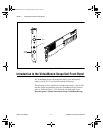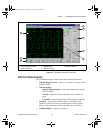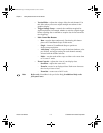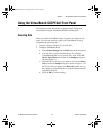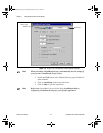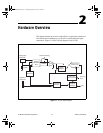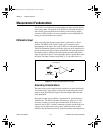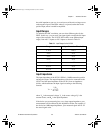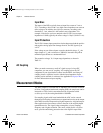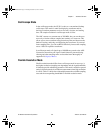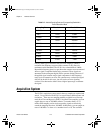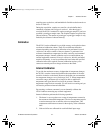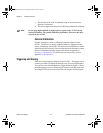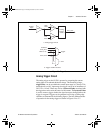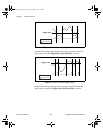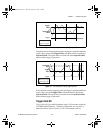
Chapter 2 Hardware Overview
NI 5911 User Manual 2-4
©
National Instruments Corporation
Input Bias
The inputs of the PGIA typically draw an input bias current of 1 nA at
25° C. Attaching a device with a very high source impedance can cause an
offset voltage to be added to the signal you measure, according to the
formula R
s
× 1 nA, where R
s
is the external source impedance. For
example, if the device you have attached to the NI 5911 has an output
impedance of 10 kΩ, typically the offset voltage is 10 µV (10 kΩ x 1 nA).
Input Protection
The NI 5911 features input-protection circuits that protect both the positive
and negative analog input from damage from AC and DC signals up to
±42V.
If the voltage at one of these inputs exceeds a threshold voltage, V
tr
, the
input clamps to V
tr
and a resistance of 100 kΩ is inserted in the path to
minimize input currents to a nonharmful level.
The protection voltage, V
tr
,
is input range dependent, as shown in
Table 2-1.
AC Coupling
When you need to measure a small AC signal on top of a large DC
component, you can use AC coupling. AC coupling rejects any DC
component in your signal before it enters into the PGIA. Activating AC
coupling inserts a capacitor in series with the input impedance. Input
coupling can be selected via software. See Appendix B, Digitizer Basics,
for more information on input coupling.
Measurement Modes
The ADC samples at a constant rate of 100 MS/s with a vertical resolution
of 8 bits. Using random interleaved sampling (RIS), the sample rate can be
increased to 1 GS/s. In this conventional mode of operation called
oscilloscope mode, the analog bandwidth is 100 MHz.
For sampling signals with lower bandwidth, the ADC can be sourced
through a noise shaping circuit that moves quantization noise on the output
of the ADC from lower frequencies to higher frequencies. A digital lowpass
filter applied to the data removes all but a fraction of the original shaped
quantization noise. The signal is then resampled to a lower sampling
frequency and a higher resolution. This mode, called flexible resolution
mode, provides antialiasing protection due to the digital lowpass filter.
CBIHWum.book Page 4 Thursday, October 29, 1998 1:56 PM



